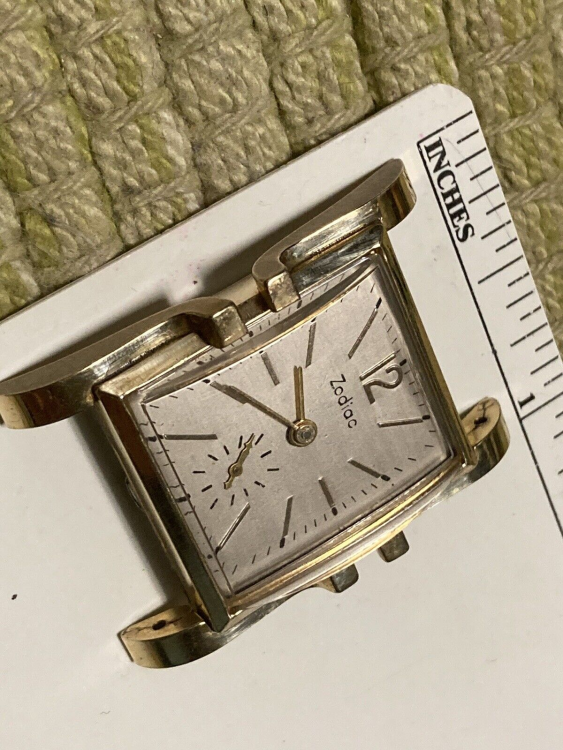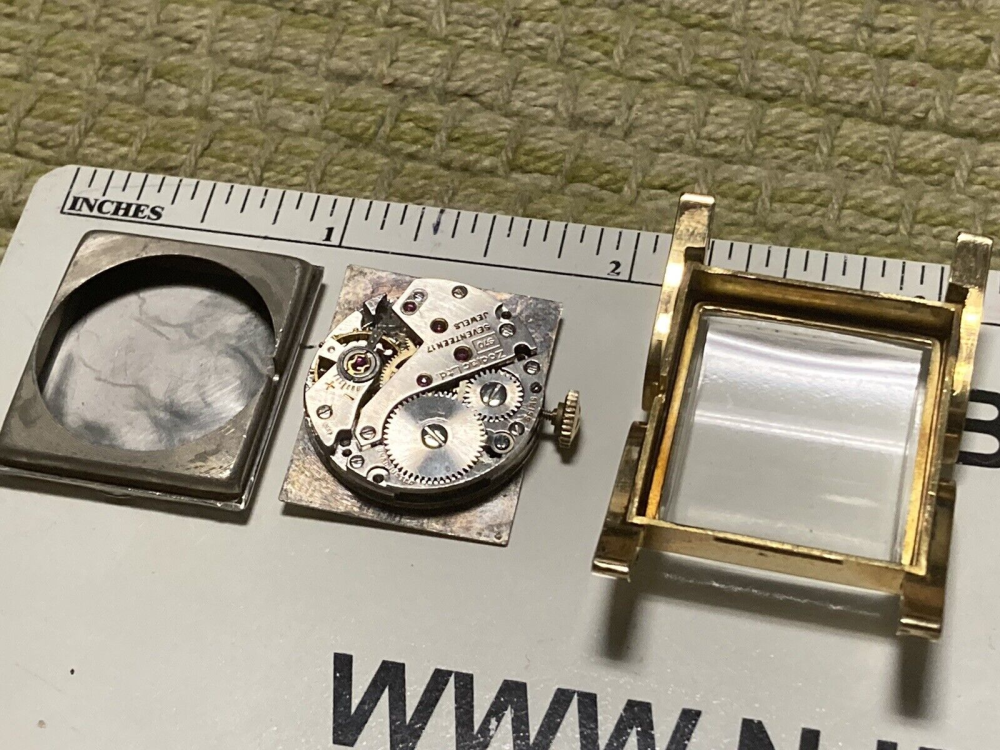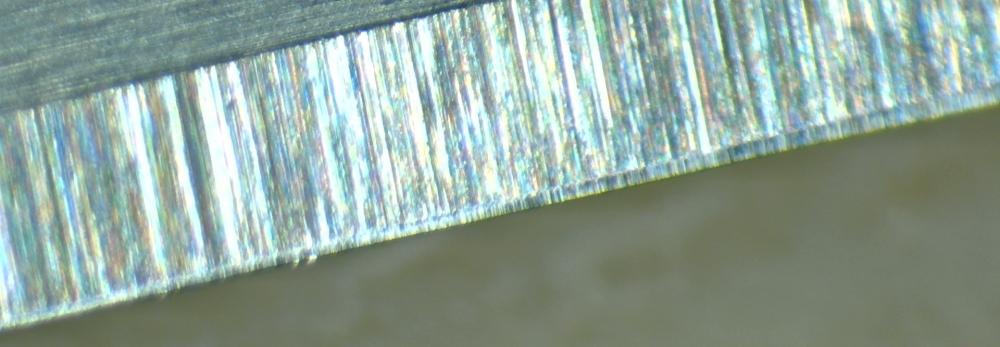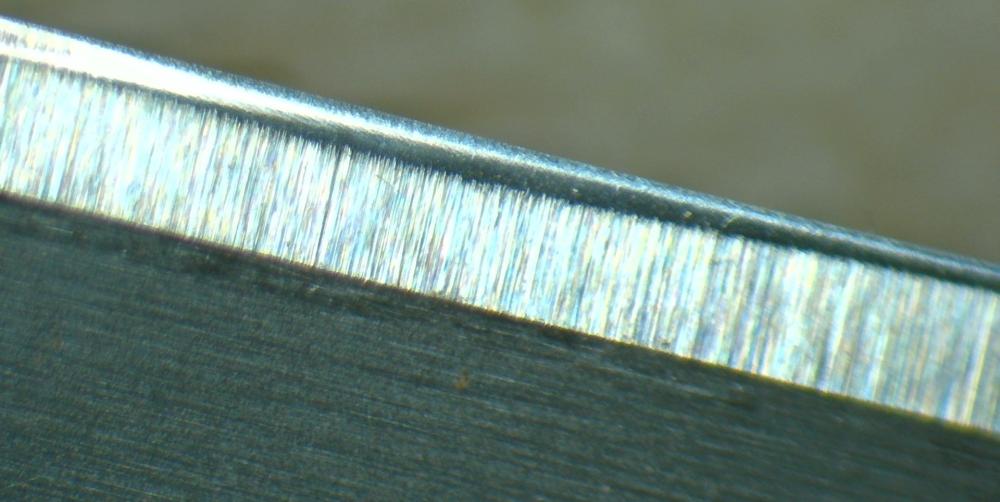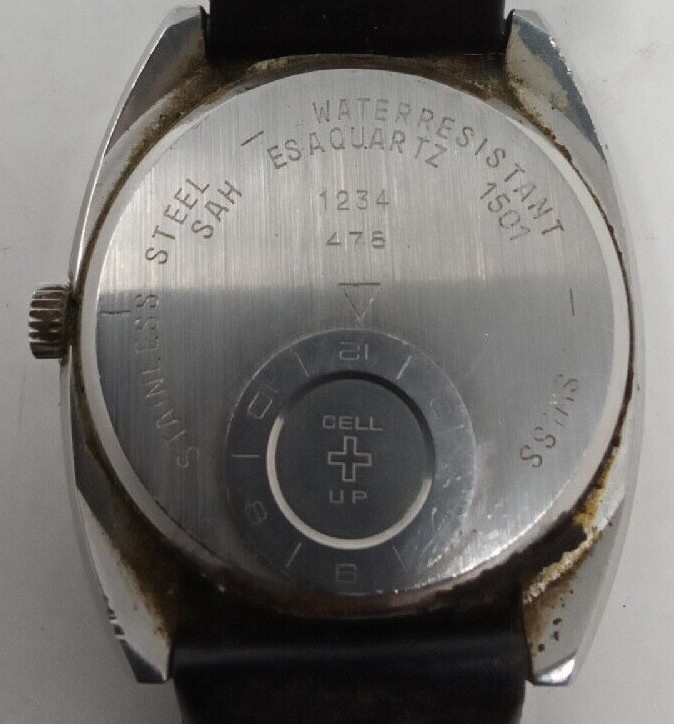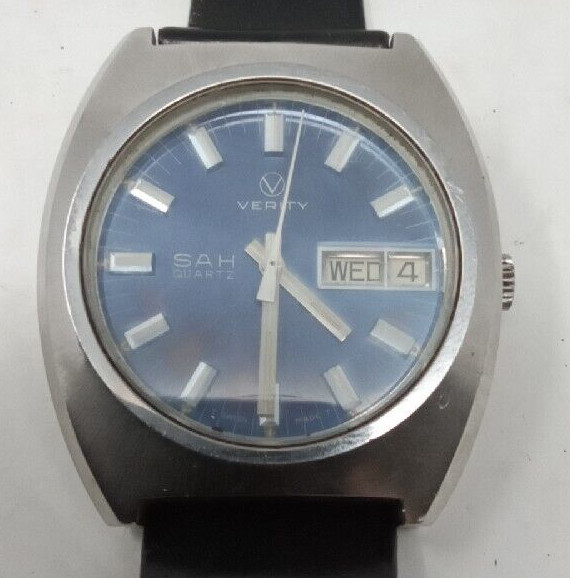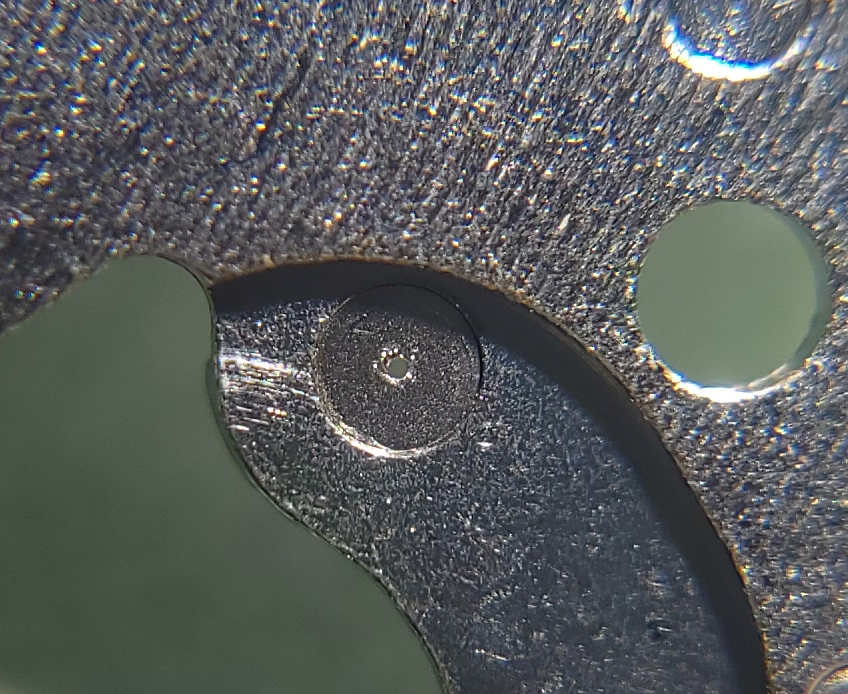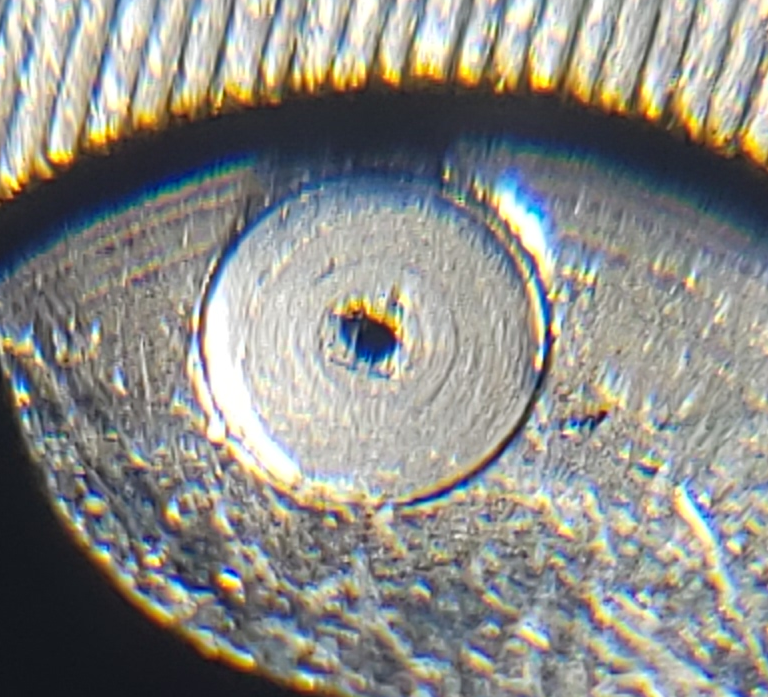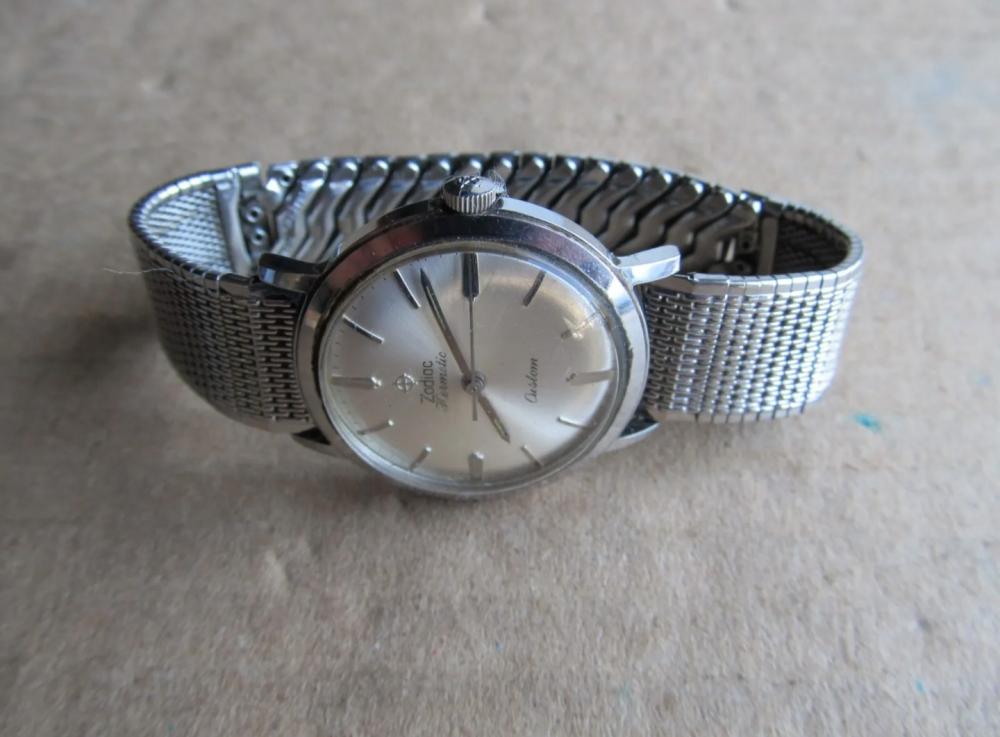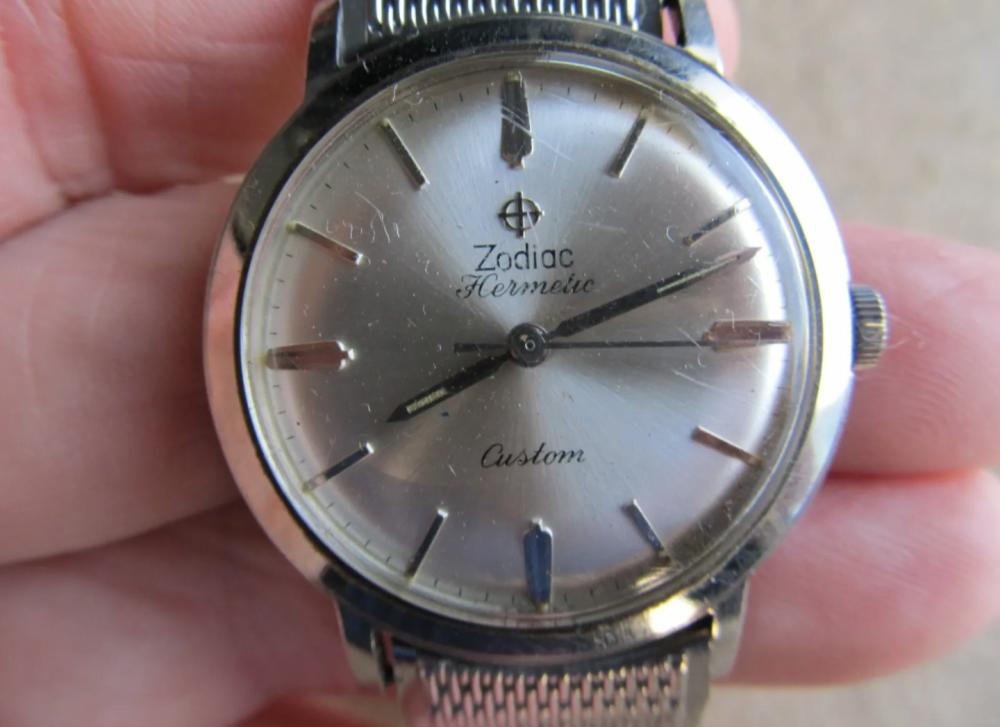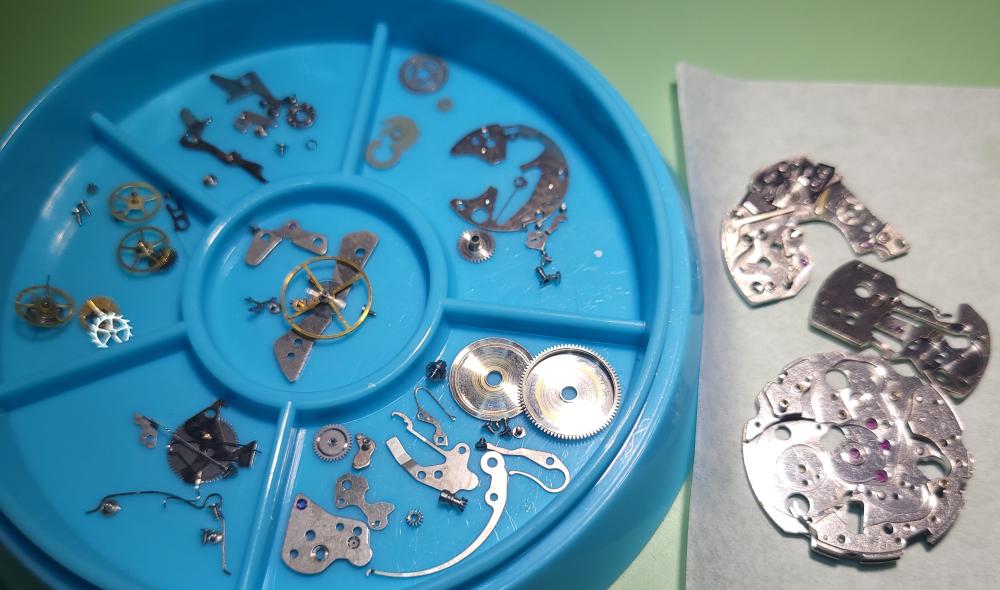Leaderboard
Popular Content
Showing content with the highest reputation on 05/31/23 in all areas
-
@kd8tzc the cyclops is just glued onto the crystal, a bit of heat will usually move it then clean off any residue with acetone. Tom2 points
-
2 points
-
If it were my watch, I would prolly send the dial to have it refinished. It is ugly in the current condition IMHO. This, of course is a very personal decision...but you asked1 point
-
Whenever I'm going on holiday or visiting somewhere i do some research on antique shops etc in that area and then save the locations to my phone. I then use these when me and the mrs get there to make crafty tactical diversions to our site seeing routes. " oh look sweetheart yet another antique shop what a coincidence this place must be choc full of them ". Tbh i think she actually knows what I'm up to but loves me enough to let me crack on. And i thought I'd married her for her looks .1 point
-
How about a clarification of the word angle? We are currently looking downward which is not overly helpful. Sideways and at least two different locations with a bonus of can we see the bottom.1 point
-
Okay so if I interpret the question correctly if we look at the mainspring barrel only can we tell which direction to put in the mainspring? Then they want to make this more fun it has to be an automatic watch otherwise On a nonautomatic there would be a hook some form that would be the same giveaway as the armor. Then the answer would be no you can't tell. Because you have no reference at all. Then because barrels come in all different shapes sizes and gear placements in other words they could have their teeth in the middle or on the top or the bottom depending upon the watch that's not very helpful. It's a Seiko watch you don't even have a stem the wind the watch sometimes. The easiest way then would be to place the barrel in the watch and look at how it drives the center wheel. Unless we have a backwards running watch the center wheel goes in one direction.1 point
-
There used to be somebody out there that didn't do this but I think he got overloaded and work and doesn't do it anymore. Then when you're making a machine for winding coils about a machine to make index wheel's. Then I figured out where I put the information on phasing for silver cells. I'm attaching a PDF on that. 1996-08-web horological times Accutron silver cells phasing.pdf1 point
-
I'm not actually sure that's why the using the heavier oil I think there's another reason. The problem with using 9010 is typically every place it's used epilam is also used. Including on the balance staff. I thought I would attach a PDF that talks about lubrication and cleaning. It's a bit dated but it brings up an interesting problem of the use of epilam. Also it has the amusement of which lubrication is being used on the keyless and doesn't that seem like that's a bit thin? One of the problems with lubrication is a lot of the manufacturers have other information which typically you might never see. Like the PDF I scanned this when I acquired some Omega documentation a while back. Use a epilam becomes interesting because typically at least until modern times it's not mentioned anywhere other than on the escapement. Now if you look at the modern Swiss companies though typically say if you replace the component use epilam. Basically the entire watches epilam except they hairspring and balance wheel is the current modern recommendation. Except what does it say in the PDF attached? So in other words it's not a modern practice epilam's been used for a very long time it just isn't mentioned the technical documentation sometimes technical documentation barely even talks about lubrication because of course that's a separate document that you may or may not ever see. 1441104110_OilingOmegawatches1957.PDF1 point
-
For hundreds of years Japan made it an artform producing the sharpest edges from the finest folded steel. I have some Jap chisels that i use when working on quality hard timbers. In 20 years some of them i have sharpened less than a half a dozen times and the edge is like nothing else i use. Bloody expensive though. Not used to sharpen pegwood , i find a fair quality craft knife blade does the job sharpened on a 3000 grit sintered ruby stone . Anything sharper then a Washita or Arkansas or finer still would be on my old Tam O Shanter stone, the grit supposedly can be as fine as 10,000. Probably pointless on a cheap knife blade, the steel wiĺl only sharpen as far as its grain will allow. I guess these Japanese blades are really thin, the carbon content also on Jap steel is generally higher than anyone elses.1 point
-
I don't know who makes the sharpest craft knife blades. I haven't been able to find any mention of tests. The sharpest blade would be flint - I might try some. The first pic is a brand new craft knife blade. The edge is surprisingly uneven and rough. The second pic is after a few minutes on a fine stone to polish the edge. It does cut better.1 point
-
Just got to have one of those! Where can I order it? I think I'll have two while I'm at it.1 point
-
Thanks for the review, I'll order one. The Japanese seem good at making sharp blades. I have a good Japanese carving knife which is as sharp as a scalpel. I only sharpen it maybe once a year, and don't get it as sharp as I could, as it's so sharp, you can easily hurt yourself.1 point
-
Not for the purists perhaps, as its quartz, but it does have a blue dial. An Esaquartz 1501 based "Verity" SAH with more than a hint of a connection to Jaquet-Droz https://grail-watch.com/2021/04/22/the-forgotten-history-of-jaquet-droz-switzerlands-shared-watch-brand/ I have a soft spot for early stepper motor quartz mechanisms, so this looks pretty interesting.1 point
-
as much as I love my 9020 the quartz oil is thinner. Then in the past there were some Seiko in particular watches where whatever they were lubricated with probably 9010 don't remember had issues and the quartz oil worked perfect. I guess there's only two ways to find out your bill a tell with current consumption which you can't do or let's see how long the watch runs. I is a little better viscosity than the 9020. so yes it would be a viable option.1 point
-
you know this is a lubrication question? You really think it's going to be that simple I would recommend 9000. as that's my favorite oil the use on quartz watches. oh I attached bonus technical documents. One of their mechanical watches this is why find lubrication fascinating. Notice the lubrication's they're using including for the balance pivots. So based on the usefulness of 9020 that's what I would recommend. 12p.pdf tinf_9000_en_0.pdf1 point
-
I went back to the technical disk of information or in this case folder and one of their other watches they recommended 9010. Then I realized that there's a lot of mechanical watches in this folder not helpful although was looking at one really nice in mechanical watch at least these people grasped good oil choices 9020 for the watch a grease and 9415 none of this epilam stuff and using oils all over the keyless parts. I do know that in the case of quartz watches ideally it would be nice to measure the current consumption. But Jeff Davila measure a fraction of microamp. This way it know if you do you servicing properly or if the lubrication you use is not right. Then yes if you use the wrong lubrication I've had this experience in the past the watch comes back. Or your case somebody's very unhappy. So I'm too lazy to track down the doctors tech sheets but I know you have figure out which one is closer to 9010 and viscosity and just go minimalistic on the pivots it doesn't need much. then the grease you normally you should work just fine on the watch.1 point
-
I assume when you're doing that you using epilam? Then when I'm servicing this watch I have 9020 and 9504 from the grease that is all I'm using. Then yes I use the grease on the minute we'll post. But seeing as how you have neither of those you can use the 9501 for everywhere that grease is recommended including the minute we'll post of course. then P125 is a breaking grease which is definitely not a reasonable substitute for 8201. Then even if you had 8201 there was issues with that I wouldn't use it anyway. Especially on this watch. Occasionally the center wheel assembly on the post the lubrication would become undesirable locking get in place by the watch would continue to drive the gear and soon they would become very very basically no friction at all. It's kind of a classic problem with this watch the secondhand will turn the hands will not. So that really wasn't the best lubrication in the first place. unfortunately I'm biased on this one. I just thought I'd mention that up front I don't use 9010 at all for variety of reasons. My light oil a choices 9020. My recommendation if you want this watch to run a long time would be to get the 9020. But as I said I'm biased in this.1 point
-
this is kinda what happened when I googled this morning it was like all of their watches use this model number? I didn't quite grasp what was going on. then there is the other little problem. It looks familiar and that will be a problem. So when I went looking is hoping to well I would've preferred something else but still was hoping to find something and then I found this on eBay Baume&Mercier 5057 Ebel 057 Cartier 157. It was for stem and if the stem is the same are the watches the same? Oh and of course there's one more watch that goes in with all of that. Occasionally work whenever we working on one of the high-end quartz watches I noticed that there were three of them that seem to be similar not necessarily the same part number or movement number but there are similar. It's comes out handy because I bought a CD off of eBay from the other brand I'm attaching a file. quick look again at the Internet and I'm finding the same thing. So you have your tech sheet.what's interesting with tech sheet is their lubrication choice? I typically like the quartz oil from the company that makes expensive oils but I've had really good luck with the expense of quartz oil so I'm happy with it and synthetic it should last forever. Don't know if your favorite German company makes anything of equivalents. But I do find a choice of oil interesting as it's a lot heavier than what I would think you'd want to have for quartz watch. At least are having to common sense of putting grease on everything else rather than ample lambing the whole thing and putting oil everywhere else. Then you do get the technical specs it runs on almost no power and as long as the voltage is above 1.25 V it should run. Then if you continue farther into the document it should take you only 45 minutes the service this watch obviously not including time running it through the cleaning machine. It does tell how to clean the rotor but I try to keep that off for the pivots you want everything on this watch spotlessly clean and I always worry about that on the pivots. So other than being astronomically expensive yet a nice detailed tech sheet it's a relatively simple movement to do and getting parts can be an interesting challenge but you have other model numbers that use the same components. Because they're all the same movement basically which is helpful when you're trying to find stuff https://calibercorner.com/ebel-caliber-157/ 157p.pdf1 point
-
Ih have two V72s as Wittnauer chronographs. One, my dad gave me. The other my dad gave to my brother. Mine is broke. My brother's is working. I bought it from him for $1600. I plan to fix mine this year...I hope.1 point
-
yes these vintage documents nice where they explained things versus today where there is slightly less explaining. It also brings up a problem. The biggest problem is exists and how do we know it exists because I scanned it to a PDF you can see it exists but otherwise how would you know this exists? It's the annoyance I have with the watch companies where there's so much bonus as I will call it documentation that never sees the light of day just because it doesn't. Basically all the procedural stuff of how to do things. Then today it's even worse because they don't want to share with anybody even including people that have accounts with them then epilam? Is it really needed in your shop maybe maybe not. its purpose is to keep the lubrication wherever it's been placed hopefully for the time in between servicing. Always bad for a variety of reasons if your lubrication is no longer doing its thing because it's typically spread away from wherever you placed it with the unfortunate problem of synthetic oils not getting sticky conceivably on a timing machine we may or may not see a problem with the lubrication. At least not until it's really bad and then it will be extremely bad then do you really needed in your shop? If you look at the scanned document what are they using on the keyless and yes I know I should a photograph that page where I get all the lines to line up with their bottles. If I knew where I put the physical thing I'd rescan at least that part. But they're using something really thin on the keyless. Oh don't worry I had looked and they're using something heavier in a few years and now are all the way up to heavy oil? So basically with the oils that are using epilam will allow them to stay where there supposed to be. But what about if you used grease instead? Especially if you using some of the horological grease. for instance if you look at some of the horological greases we will see that it has thixotropic properties. In other words is a grease and stays were you wanted but on friction becomes more fluid. Wouldn't this be better for keyless works it will stay where it's needed then would you still need epilam for a grease perhaps? then in the case of @LittleWatchShop I believe he is currently hoarding the world supply of Elgin oil. A oil that has a very interesting property and what I can tell much much better than the Swiss oils of it stays wherever you place it. So conceivably you don't need epilam because it's better at staying wherever you put it. so basically it isn't going to hurt anything isn't going to improve the quality of lubrication but it should hopefully guarantee that the lubrication stays wherever it's been placed in between servicing. As opposed to mysteriously disappearing like lubrication's sometimes do.1 point
-
A forum is kinda like one-dimensional communication. Hard to detect nuance that would be evident in a face-to-face conversation. Moreover, often good communication requires some history with the person you are communicating with. Since you have not been on this form for very long, you have not gotten to know @JohnR725. If you had, you would take this thread in stride. John is like the grumpy old man rocking on the front porch smoking a pipe and dispensing wisdom with an occasional snark. His answer is sometimes embedded in a story. The snark helps the wisdom to land true. If you are not a "drive by" forum member and, instead, stay awhile, you will warm up to John! His knowledge is deep.1 point
-
I'll take a back seat too - have a cup of tea and put it on my Bergeon coaster (only £159)1 point
-
@AndrasP, I know your watch has the compass feature where you can rotate the outer part with the second crown. Does the entire watch face rotate when you do that? From the picture, it looks like the compass ring and dial face are both rotating. Just curious. It won't solve your issue, but was just curious as I believe on;y the compass ring should rotate.1 point
-
For this kind of tarnish on nickel plated and gold plated movement (or any kind), I learned long ago to use blanc d'Espagne, also known as blanc de Moudon, or in English sometimes White of Spain, or just whiting powder. It's super finely ground calcium carbonate, and is used for all kinds of stuff like making gesso, or whitewashing windows and so forth- and is the main ingredient in most chalk*. Available here from drugstores/ art supply/ hardware stores. Should be fairly easy to find about anywhere. To clean up plates and bridges, take a pinch and rub it wet (with water) all over the stained area. It won't leave scratches or mess up the original finish, but does a great job of getting those stains off. *French chalk is magnesium silicate. Very old watchmaking books mention it often, and many old benches had a cubby hole right in the front for a block of chalk, which you were to rub a long bristle brush over, then brush down the plates and bridges. I think the idea was to brighten things up. So, while I haven't tried it, you might try French chalk as well. It's what talcum powder is made from, so that's an easy source of powder form.1 point
-
After reading this thread I started using my horotec pin vices this week with the round tooth insert, see earlier posts. I must admit that they make a big difference, no more fighting with tweezers to get the arbor in or out of the mainspring coil, and then pinging it across the room. It even makes it easier lubricating the little thing. Who knew?!?1 point
-
1 point
-
I'm doing close inspection on the parts to pick the best ones, and the barrel bridge from the original has a chipped jewel and that repair on it, so I'm using the other one. Only problem is there's some wear around the edge of the bushing in the center for the center chrono wheel. The oil cup side looks perfect, but the wheel side looks like it's been poked with a pivot a few times. It doesn't look like it's going to be a problem, but I was wondering if there are any techniques for cleaning it up a bit or burnishing the edges so it won't wear the pivots. I know the pivots are much harder than the bushing, but I still want to ask you more experienced friends. The other option is of course pressing it out and replacing it with a jewel, but is that overkill?1 point
-
1 point
-
Parts movement arrived, and luckily most of the parts look a lot better than the original one. There's some wear around the barrel area so I'll be checking side shake there, but overall looks good. Importantly it has the broken screws and spring I need in perfect shape. Looks like we may have a Watch of Theseus situation here.1 point





